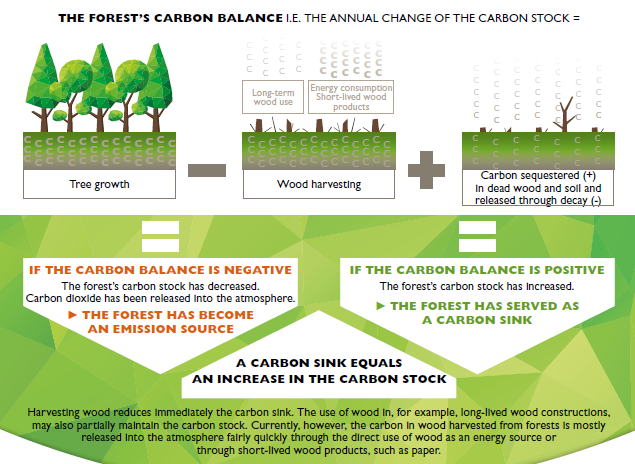Municipalities recognise the importance of carbon sinks
At the national level sinks play an important role in the quest for carbon neutrality. The role of sinks in the national carbon neutrality targets and target years varies between the nations. For example, Finland counts all sinks in the accounting for the net zero target, while Sweden only counts the sinks that are additional to the sinks that are required in its country-level target in the European Union. In Norway, carbon emissions and uptake from LULUCF in the reference year 1990 is not included in what is reported under the Paris agreement, but emissions and uptake that is additional will be included when looking at goal achievement in 2030. For Denmark, the national reduction target of 30 pct compared to the emission in 1990 includes all emissions and removals as defined by the IPCC (2006) and that are included in the official reporting under the United Nations Framework Convention on Climate Change (UNFCCC).
At the municipal level sinks are also important in territorial carbon accounting, but municipalities have very different endowments with respect to the development and maintenance of carbon sinks. There are also uncertainties in what and how to calculate. Nevertheless, several municipalities have stated ambitious net zero targets that make explicit or implicit assumptions on the level of carbon sinks.

Infographics: Syke
To explore local level work related to sinks, we carried out a survey in 2022 among municipalities in Denmark, Finland, Norway, and Sweden. We received a total number of 247 responses with approximately the same number of responses from the countries (Table 1). The share of the total number of municipalities differs, however, due to differences in municipal structure. For example, in Finland with a total of about 300 municipalities the sample covered mainly the large (> 20 000 inhabitants) municipalities whereas in Denmark that generally has bigger municipalities the sample gave coverage of all municipalities.
Denmark | 44 |
Finland | 67 |
Norway | 67 |
Sweden | 69 |
Total | 247 |
Table 1. The number of responding municipalities. The aim was to collect a representative sample. Some bias towards larger and more active municipalities was, however, evident in, for example, Finland.
In addition to the survey, information on the use of sinks in national and local accounting was collected from discussions at workshops with representatives from municipalities in the participating Nordic countries.
The survey on municipal work on sinks carried out in Denmark, Finland, Norway, and Sweden in 2022 showed that many municipalities across the Nordics have taken an active interest in developing and maintaining carbon sinks (Fig. 1). Especially Danish and Finnish municipalities have actively worked with sinks, with 84 and 75% of the responding municipalities reporting activities in relation to carbon sinks, whereas in Sweden activities were more limited with about two-thirds of the Swedish municipalities responding that they are not working with sinks (Fig.1). However, an increasing recognition of sinks was also noted. For example, in Sweden an additional 21% of the responding municipalities foresaw work on sinks within a year.
Fig. 1. Share of responding municipalities working with sinks based on survey responses.